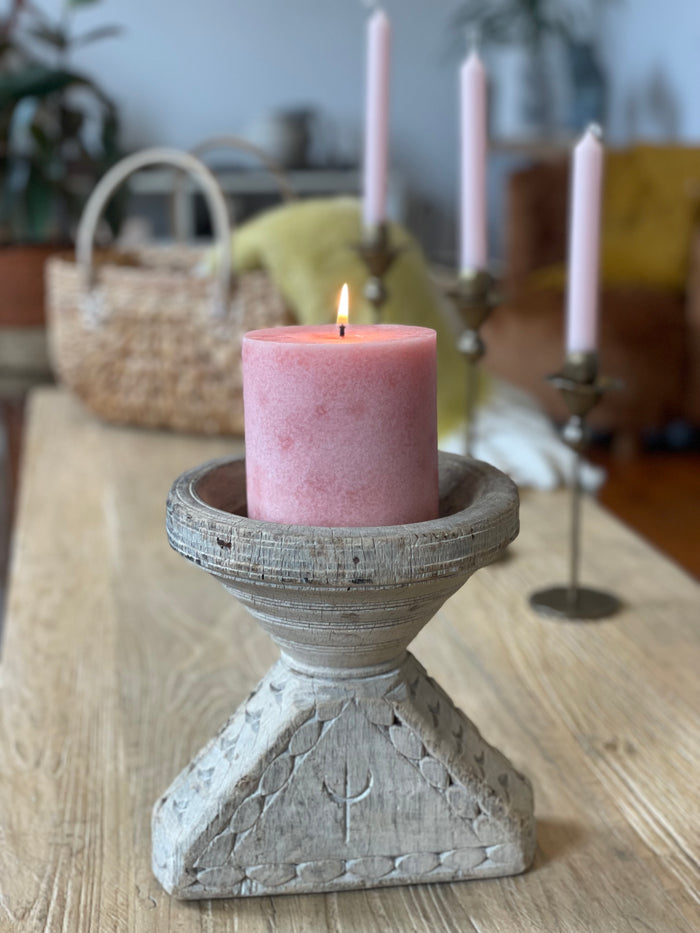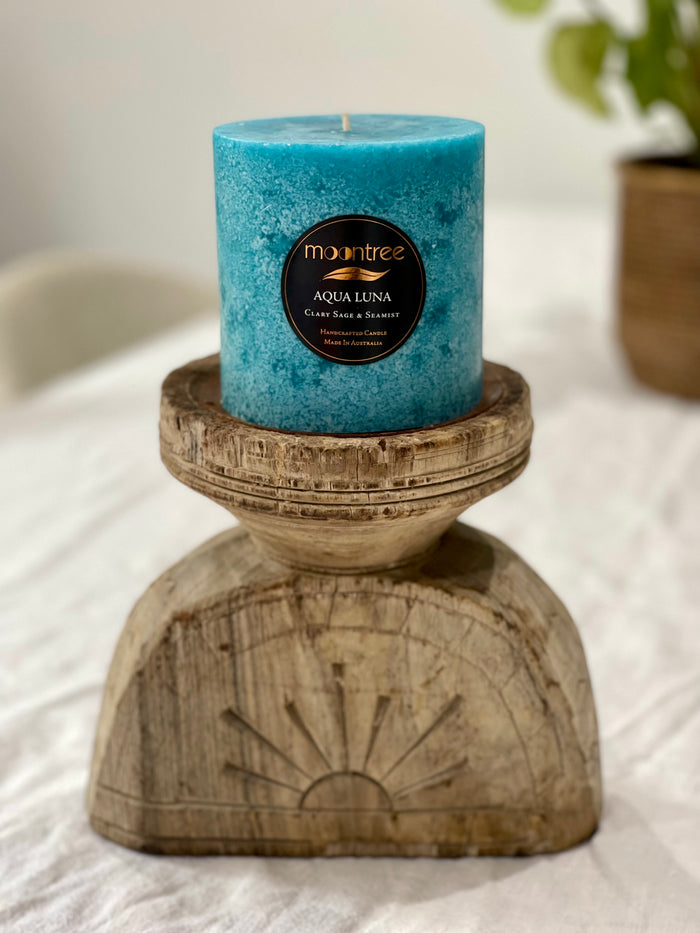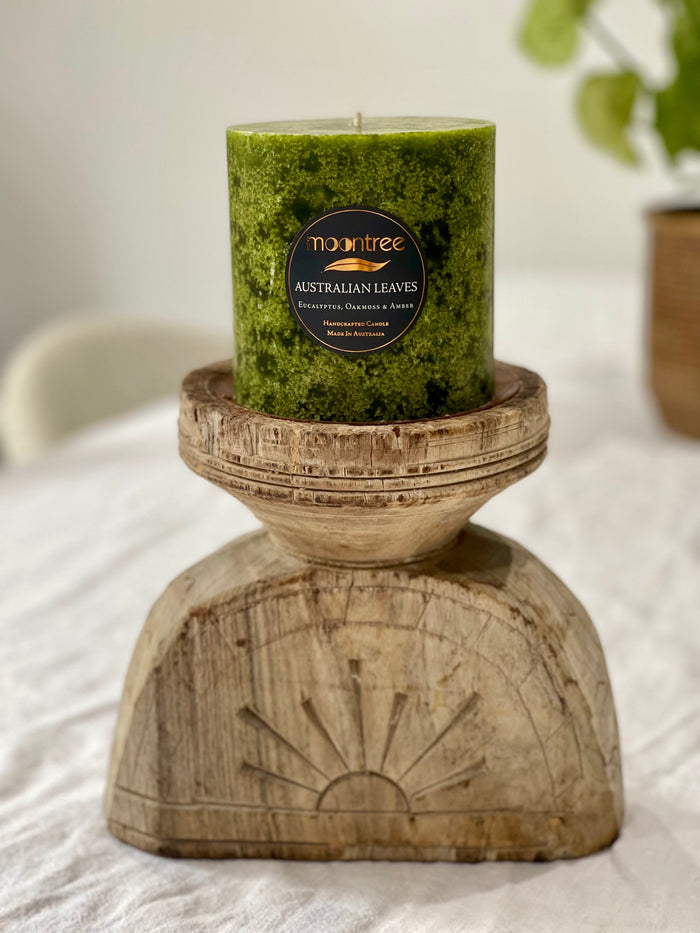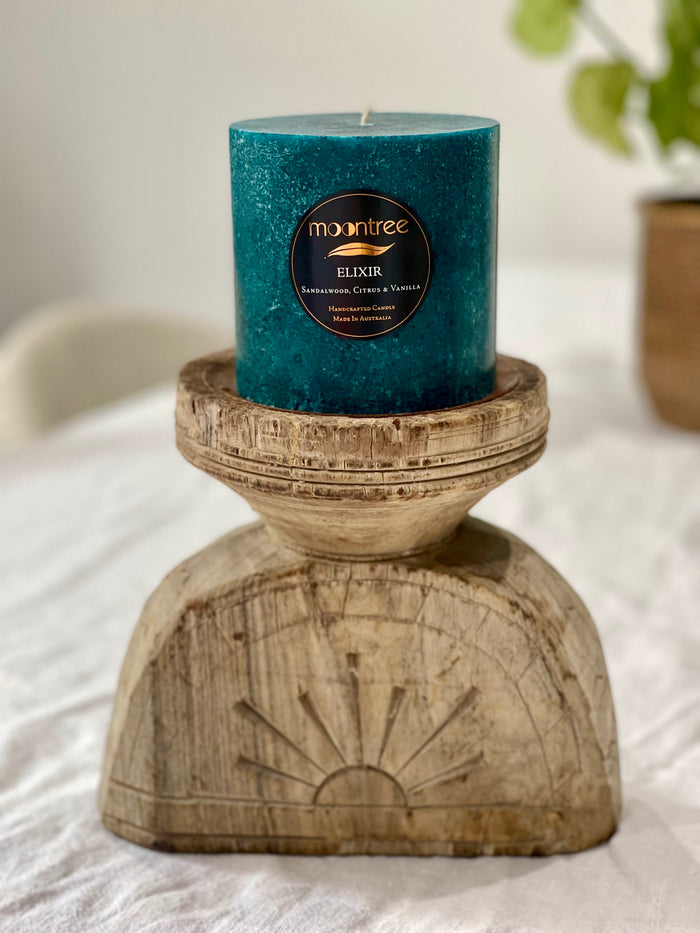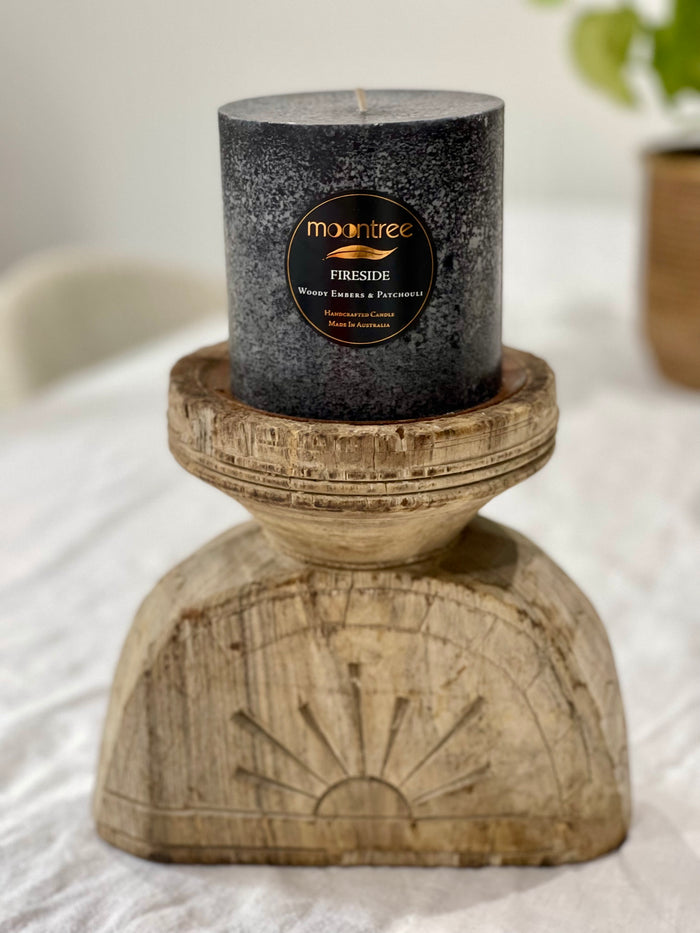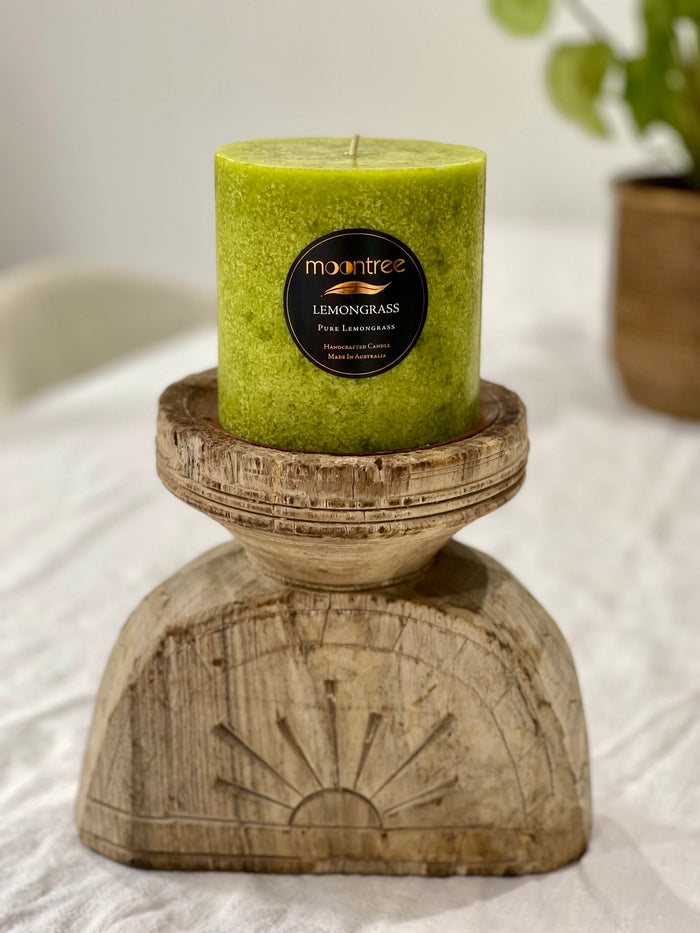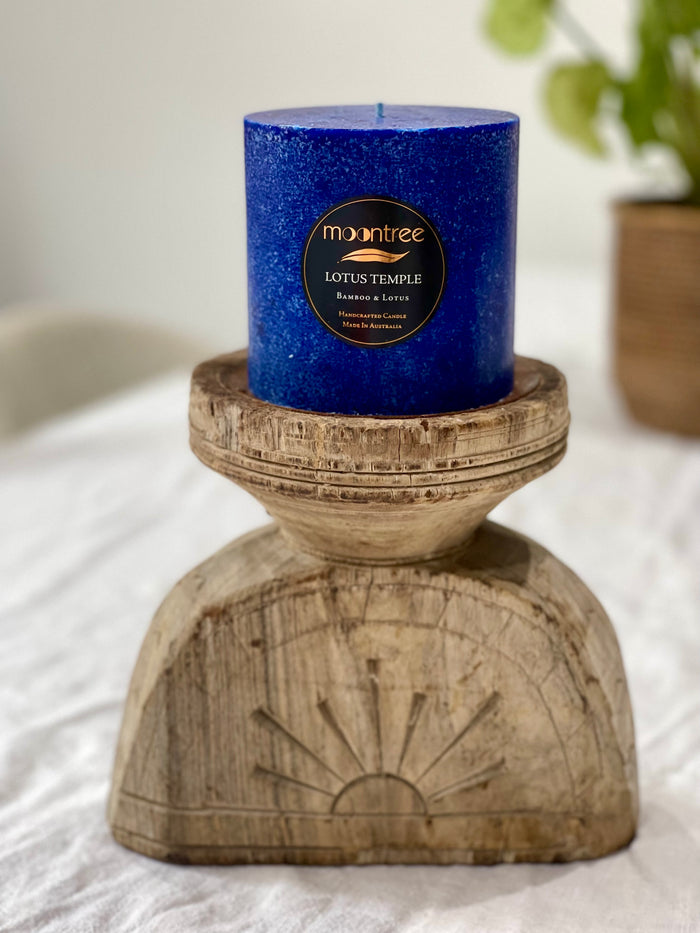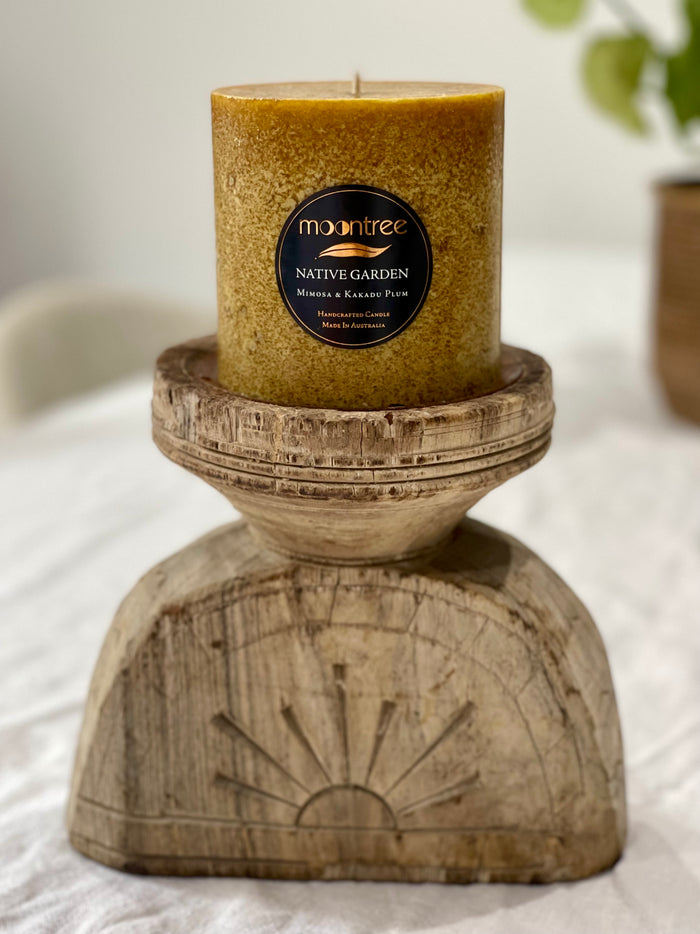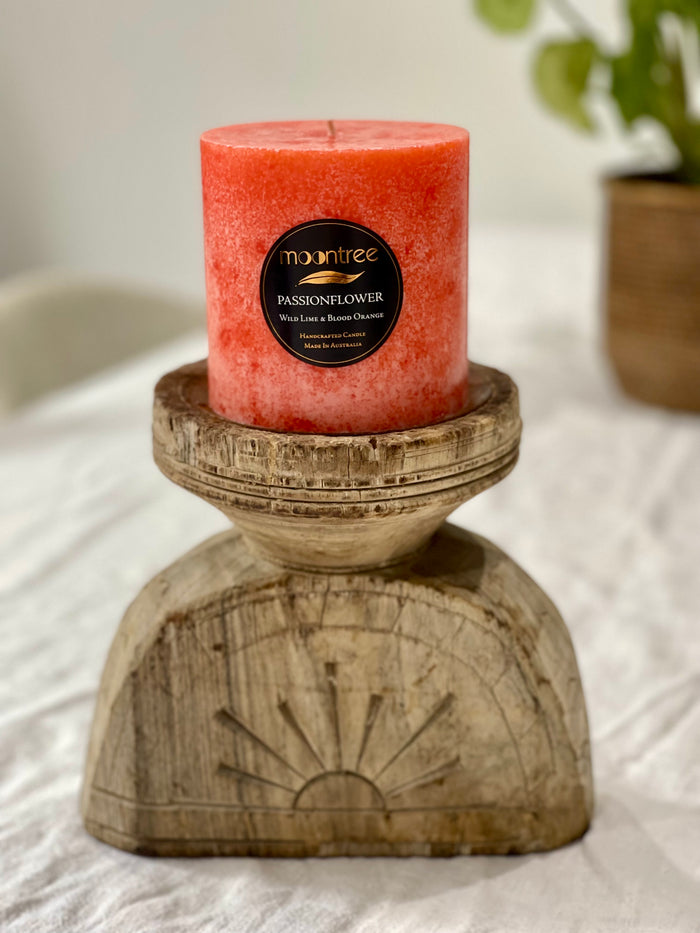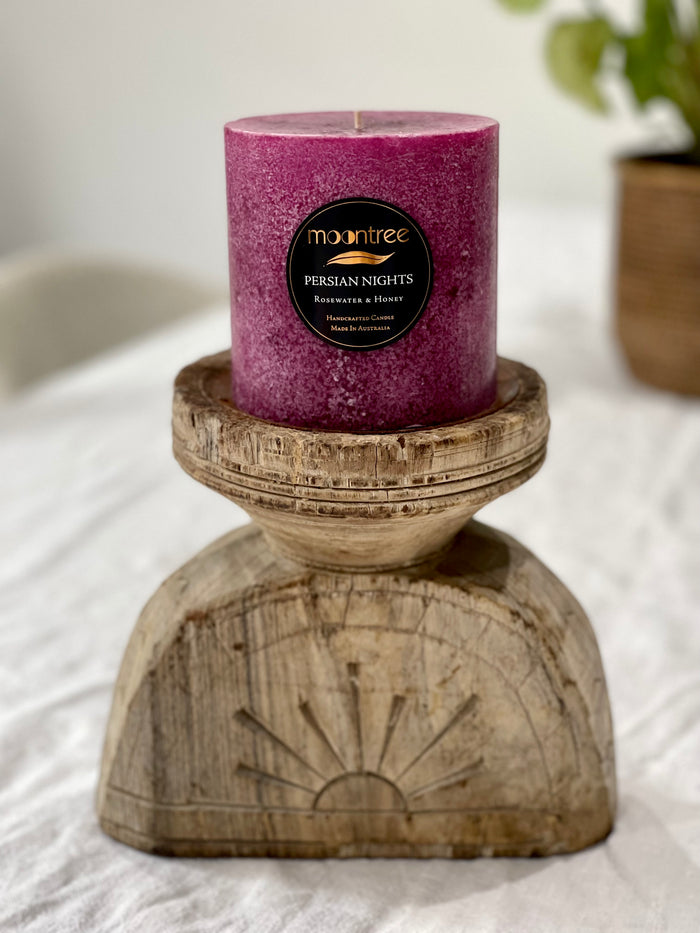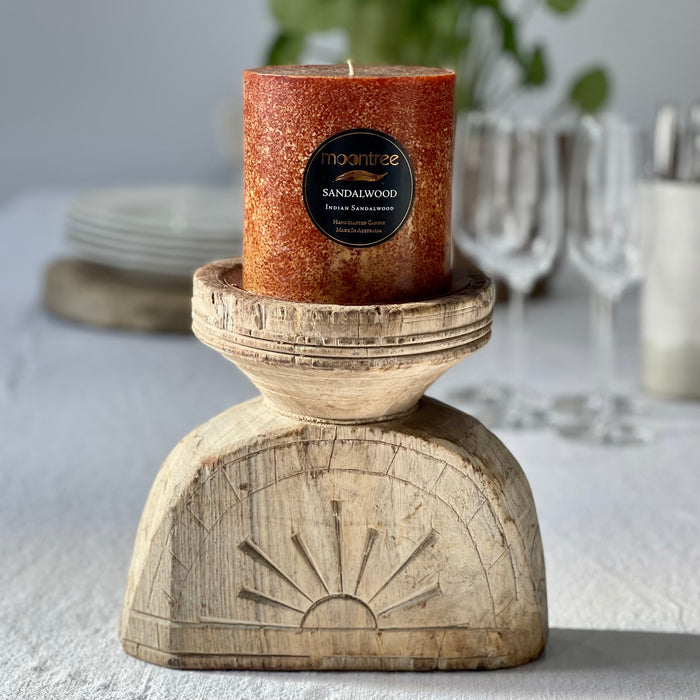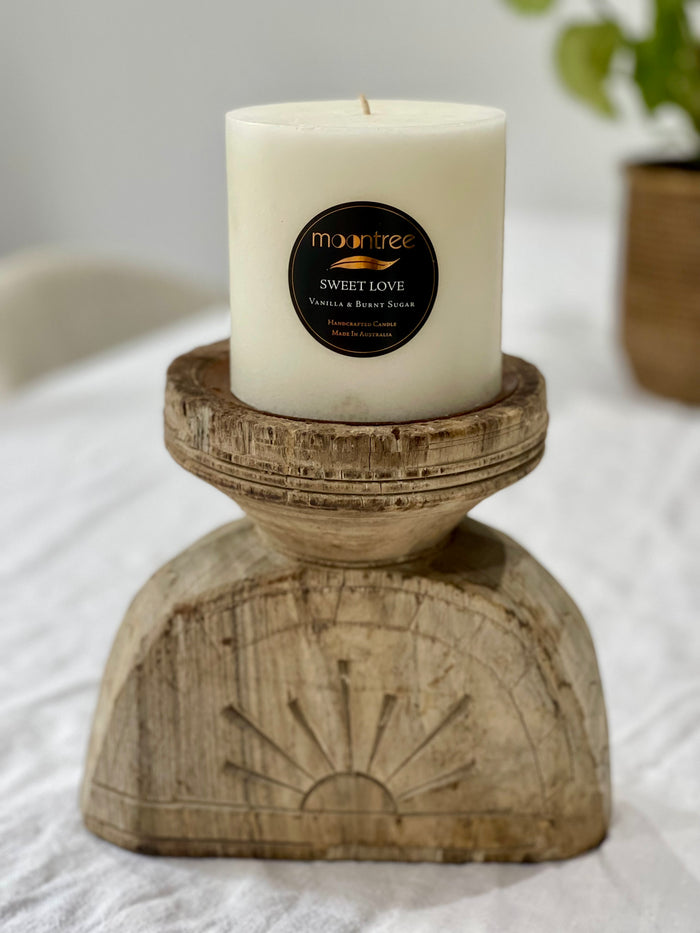Moontree is located in the Blue Mountains within the Country of the Dharug and Gundungurra peoples.
We acknowledge their continuous and deep connection to their Country.
FAQ
1. Waxes – Are your candles made from natural wax?
Our candles are made from a variety of waxes, including paraffin, coconut, soy, and palm wax. Each wax has unique properties that affect burn time, scent throw, and appearance. We carefully select the best wax for each candle to ensure the highest quality and performance.
2. What type of fragrances do you use in your candles?
We use high-quality fragrance oils in our candles. While some candles are scented with essential oils, fragrance oils provide a wider variety of scents, better scent throw, and more stability when mixed with wax. Our focus is on creating beautiful, long-lasting fragrances that enhance your space.
3. Are your candles safe to burn?
Yes, all Moontree candles are made with carefully selected ingredients to ensure a clean, safe burn. We use lead-free cotton wicks and premium-quality waxes and fragrances. To maximise safety, we recommend following proper candle care instructions, such as trimming the wick before each use and never leaving a burning candle unattended.

8. Do you offer custom or personalised candles?
Yes! We offer custom candle options for special events, corporate gifts, or personal preferences. Get in touch with us to discuss your custom candle needs.
9. Where are your candles made?
Moontree candles are proudly designed and handcrafted in Australia using the finest ingredients to ensure superior quality. In addition, some of our dinner candles are made in Indonesia, and others are crafted in France using traditional candle-making techniques. We take great care in selecting and curating our range to offer the best craftsmanship from around the world.
10. Do you ship Australia-wide?
Yes, we offer Australia-wide shipping and ensure that all orders are packaged securely to arrive in perfect condition.
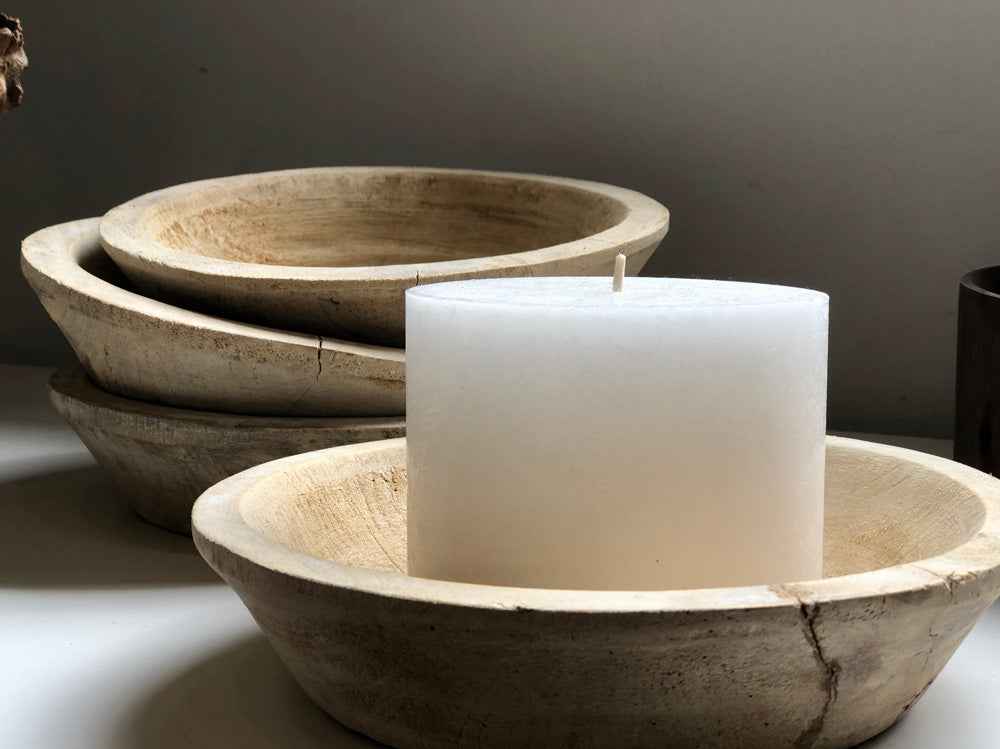
Coastal Garden
- Regular Price
- from $12.95
- Sale Price
- from $12.95
- Regular Price
-
- Unit Price
- per
Aqua Luna
- Regular Price
- from $12.95
- Sale Price
- from $12.95
- Regular Price
-
$0.00
- Unit Price
- per
Australian Leaves
- Regular Price
- from $12.95
- Sale Price
- from $12.95
- Regular Price
-
$0.00
- Unit Price
- per
Elixir
- Regular Price
- from $12.95
- Sale Price
- from $12.95
- Regular Price
-
$0.00
- Unit Price
- per
Fireside
- Regular Price
- from $12.95
- Sale Price
- from $12.95
- Regular Price
-
$0.00
- Unit Price
- per
Lemongrass
- Regular Price
- from $12.95
- Sale Price
- from $12.95
- Regular Price
-
$0.00
- Unit Price
- per
Lotus Temple
- Regular Price
- from $12.95
- Sale Price
- from $12.95
- Regular Price
-
$0.00
- Unit Price
- per
Native Garden
- Regular Price
- from $12.95
- Sale Price
- from $12.95
- Regular Price
-
$0.00
- Unit Price
- per
Passion Flower
- Regular Price
- from $12.95
- Sale Price
- from $12.95
- Regular Price
-
$0.00
- Unit Price
- per
Persian Nights
- Regular Price
- from $12.95
- Sale Price
- from $12.95
- Regular Price
-
$0.00
- Unit Price
- per
Sandalwood
- Regular Price
- from $12.95
- Sale Price
- from $12.95
- Regular Price
-
$0.00
- Unit Price
- per
Sweet Love
- Regular Price
- from $12.95
- Sale Price
- from $12.95
- Regular Price
-
$0.00
- Unit Price
- per

